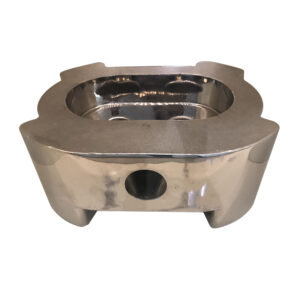
MPI is a non-destructive testing (NDT) method used to detect surface and near-surface flaws (e.g., cracks, laps, seams, inclusions) in ferromagnetic materials (iron, nickel, cobalt, and some alloys).
Core Principle
Magnetization:
The component is magnetized, creating magnetic flux lines within the metal.
Flaw Disruption:
If a flaw (e.g., crack) is present, it interrupts the flux lines, causing magnetic flux leakage at the flaw site.
Particle Attraction:
Finely milled ferromagnetic particles (dry or suspended in liquid) are applied to the surface.
The leakage field attracts and holds these particles, forming a visible indication (“particle buildup”) at the flaw location.
Key Steps in MPI
Surface Preparation:
Clean the metal surface (remove oil, grease, paint, or scale) to ensure particles flow freely.
Magnetization:
Direct Contact: Use prods/electrodes to pass current through the part.
Inductive: Use a central conductor or coil to generate a magnetic field.
Direction: Apply fields longitudinally (along the axis) or circumferentially (around the part).
Particle Application:
Wet Method: Particles suspended in oil/water sprayed or flowed over the surface.
Dry Method: Dry particles dusted onto the surface (ideal for rough surfaces).
Inspection:
Visible Light: Use white contrast paint for dark particles (e.g., black oxides).
UV-A Light: Fluorescent particles glow under ultraviolet light for high sensitivity.
Demagnetization:
Remove residual magnetism (prevents interference with future operations or particle attraction).
Applications
Industries: Aerospace, automotive, oil/gas pipelines, welding inspection, castings/forgings.
Components: Crankshafts, gears, pressure vessels, bolts, welds, structural steel.
Flaw Types: Cracks (fatigue, quenching), lack of fusion, grinding damage, porosity near surfaces.
Advantages
Highly sensitive to fine surface/near-surface defects.
Fast, low-cost, and portable.
Real-time visual results.
Works on complex geometries.
Limitations
Material Restriction: Only ferromagnetic metals (not for aluminum, copper, stainless steel 300-series).
Depth Limit: Detects flaws up to ~6 mm below the surface (depending on material/field strength).
Surface Condition: Rough surfaces may mask indications.
Orientation: Flaws must be roughly perpendicular to the magnetic field. Parallel flaws may be missed.
Post-Cleaning: Requires removal of residual particles.
Standards & Safety
Standards: ASTM E1444/E709, ISO 9934, EN 1290.
Safety: Use UV protective gear (for fluorescent MPI), ventilation (avoid particle inhalation), and electrical safety during magnetization.
MPI is indispensable for ensuring structural integrity in critical components where surface defects could lead to catastrophic failure. When performed correctly, it offers unmatched reliability for flaw detection in ferromagnetic metals.





